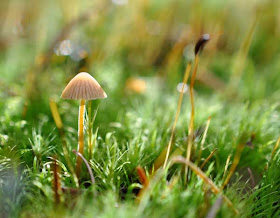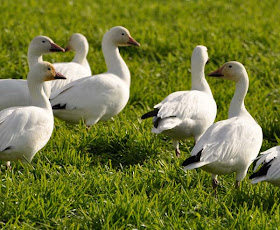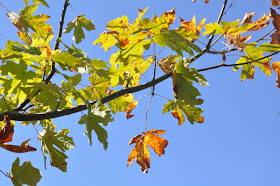It was another beautiful October morning that called me outdoors early. With reports of orcas heading in yesterday afternoon I went out to the westside in case they would show up there this morning. No whales, but what it was still more than worth the trip out there.
It was a golden sunrise, and clear in town, but as I got to the middle of the island there was a dense bank of fog stretched across the valley that left me wondering if I would be able to see anything at all in Haro Strait. Amazingly, there was fog over in the Strait of Juan de Fuca, but Haro was clear, providing this picturesque scene of a purse seiner in the early morning light with the silhouette of the Olympic Mountains in the background:
They soon got to work to try and catch some fish, and I decided to hang out and watch them haul their nets in. I ate my homemade zucchini bread that I brought for breakfast, and then I realized it was going to take them a while with their set, so I decided to walk down and see what sort of wildlife I could see in the meantime. It turns out there were all sorts of other critters fishing this morning too!
The first one I came across was this great blue heron perched on a kelp bed. It caught a gunnel (long, skinny fish) while I was watching. You can see the gunnel in its mouth in this photo:
There were a lot of other birds around too, including many Pacific loons (too far offshore for photos), a few rhinoceros auklets, a red-necked grebe, and a flock of glaucous-winged, Heermann's, and California gulls. This glaucous-winged gull found a sea urchin, but it didn't quite seem to know how to go about eating it:
Then a flock of about 100 common mergansers came out of the cove, and they were busy diving for fish:
A few more flew in to join the gang:
Offshore a Steller sea lion came to the surface, and closer to shore a young harbor seal foraged under the kelp:
By this time the purse seiner was hauling in its net, but it had drifted further away and almost out of view, so I decided to head down the shoreline a little bit. I stopped where on the way out I had seen a red-tailed hawk feeding on a raccoon carcass (breakfast takes all forms this morning!), and stepped out of my car to watch a second purse seiner haul in its net:
While I was watching, I was startled by a deer that I hadn't seen browsing in a blackberry bush just a few yards from me. An Anna's hummingbird also flew by - what was it having for breakfast?! Possibly sap? While most of our hummers have departed by now, a few hardy souls stick the winter out in the Pacific Northwest. I'm not quite sure how they do it!


















































